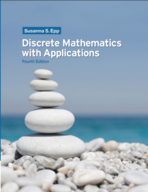Math
Discrete Mathematics with Applications 4th Edition solutions
Author: Susanna S. Epp
Publisher: Cengage Learning
ISBN: 9780495391326
Buy the book
Select Chapter:
